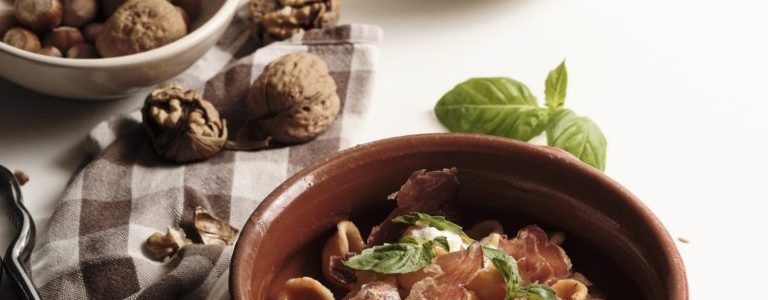They represent the Apulian culinary tradition all over the world and are rich in vitamins: properties, recipes and history of turnip greens
The symbols of Apulian cuisine are countless. Rice, potatoes and mussels, frize, pittule, panzerotti, Bari focaccia. And then there are them, the undisputed queens in the kitchens of the heel of Italy: the orecchiette with turnip tops!
Turnip greens: between uncertain properties and origins
There are several variety, which differ in greater or lesser earliness, and are harvested in almost all of the South from late autumn to late March. For the recipe of orecchiette with turnip greens, the inflorescences of the plant are used, i.e. the smallest leaves and the most tender stems of Brassica rapa, of the Brassicaceae family. Apart from the different flowering period, there are two types of turnip: the Bari, which has the hardest stem and many leaves, and turnip tops Neapolitan (also known as broccoli), with a more tender stem. Therefore, there are also numerous theories on the origin of turnip greens. According to some, its seeds were imported to Italy by the Genoese returning from the East. Others claim that this plant only reached Europe in the 17th century and was known as Syrian cabbage or Cyprus cabbage. In any case, the first crops in Italy can be traced back to the Kingdom of Naples and, shortly after, also throughout the Po Valley. The characteristic is the green inflorescence, but not only: it is a product of the earth rich in mineral salts (calcium, sodium, potassium, magnesium, zinc, iron and phosphorus) and di vitamins of group B (B1 and B2), PP, C and A. Preferring a mild climate, the turnip greens contain a lot of water, love a soil rich in humus, not compact and sunny. In the kitchen they are consumed boiled or steamed, as a side dish or as an accompaniment to pasta.
Orecchiette, Provencal or Norman?
According to the first, the orecchiette were born in the territory of Sannicandro, in the heart of the Bari metropolitan area, during the Norman-Swabian domination between the 12th and 13th centuries. Another instead wants them to originate from Provence, where in the Middle Ages a dry pasta called crosets which in shape actually recalls the orecchietta and which would later be brought to Puglia by the Angevins around the thirteenth century. The orecchiette from Bari, however, are prepared with durum wheat semolina, water and salt, have an amber color and their shape is obtained by outlining the pieces with the help of the tip of the thumb. The traditional way to bring them to the table, as is known practically all over the world, is precisely with turnip greens.
The Apulian recipe
To prepare the orecchiette, as mentioned, you need flour, durum wheat semolina, water and salt. First you need to work the flour with water and a little salt until you get a smooth and soft dough. From this we obtain cords of about one centimeter in diameter to be made into irregular pieces, in order to obtain a sort of gnocchetti. With the rounded tip of the knife blade crush and drag the pieces of pasta one at a time on the pastry board (it is no coincidence that in some areas of Puglia the orecchiette are also called trailed, a name which also indicates another kind of fresh pasta widespread in the same region), then with the help of the tip of the thumb of one hand, the fragment of pasta is turned over and the typical shape of the orecchietta is obtained. The pasta should be put to dry on a frame with fine-woven metal mesh and placed in a cool and airy place, but you can also eat it fresh. If you want to present yourself at a table set for four people with a nice plate of orecchiette with turnip tops, just cook the pasta in plenty of boiling salted water and after a few minutes add the turnip greens. When cooked, drain and season with a little extra virgin olive oil. This is the simplest and most dietetic recipe, but you can also sprinkle everything with del pepper freshly ground and replace the raw one with oil in which a little bit of melted anchovies salt and brown two cloves of garlic. Another recipe calls for the turnip greens to go before putting them in the pan boiled in salted water in which the orecchiette will then be cooked.
How to choose the best ones
But turnip greens can also be eaten as simple side dish: they can simply be boiled and eaten, as they are, without condiments or alternatively just blanch them in boiling water and then season them with a little oil and lemon. The important thing is to choose the best ones. How to recognize them? They have firm and thin stems, inflorescences closed and without yellow parts, while the leaves they must be consistent and one color bright green. The edible parts are the florets, the flowers and the tender leaves, which must be beautiful green. To clean the turnip greens in the best way you need to eliminate first of all hard stems and the thickest and largest leaves, select the florets and leaves, discarding the older ones, leaving only the tender ones, and place them for a while in a colander under running cold water, rinsing them and cleaning them well with your hands in order to remove the earth residues.


